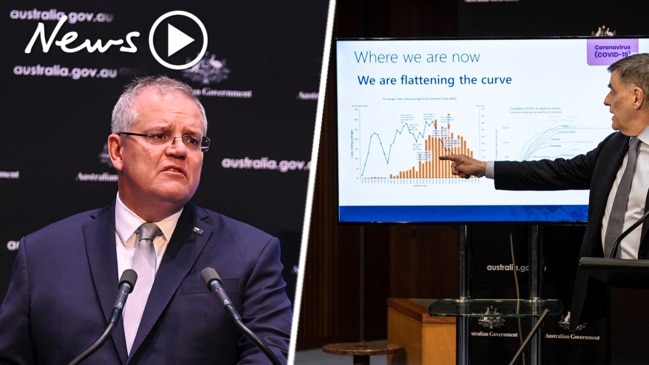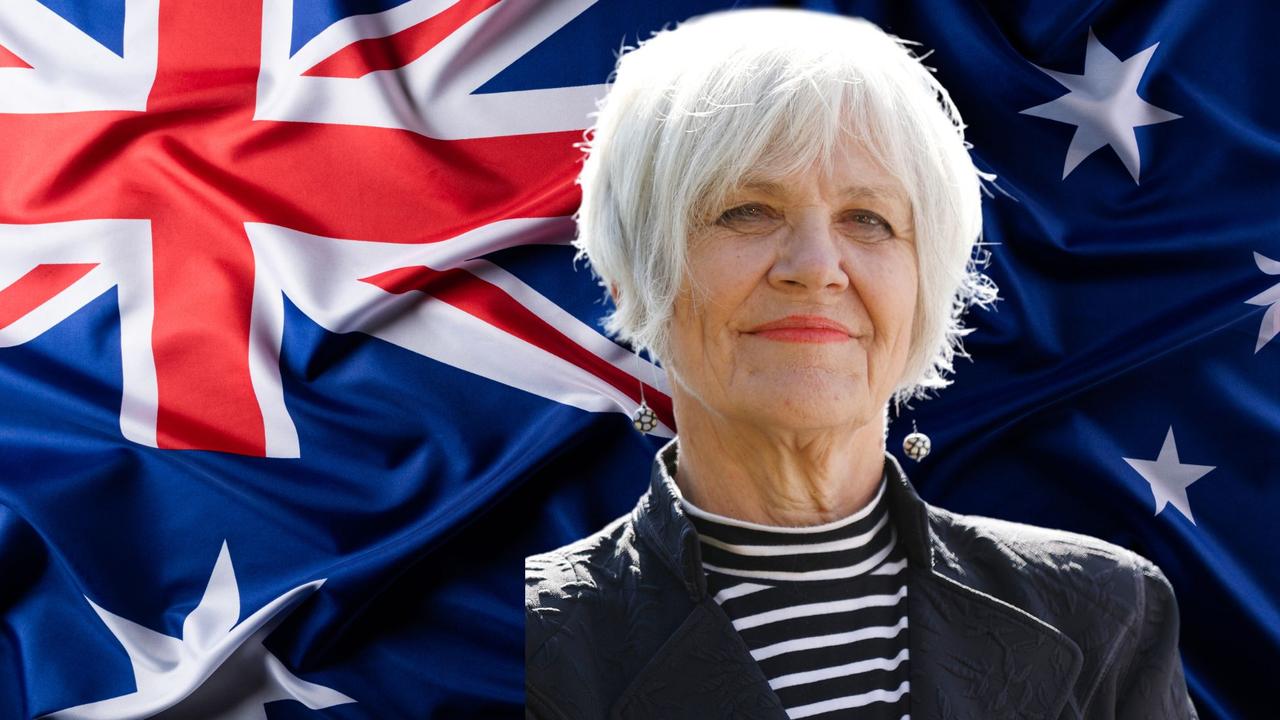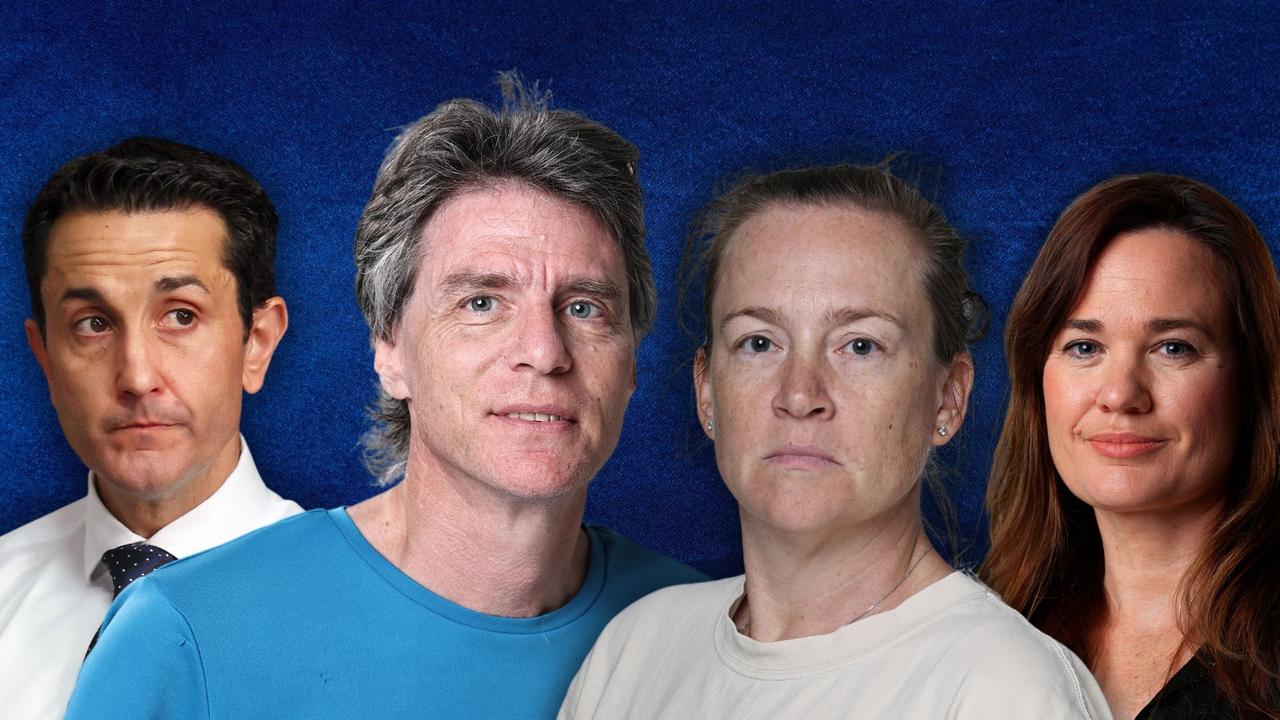Coronavirus secret modelling shows nightmare scenario
Secret modelling released for the first time shows what would have become of Australia had coronavirus spread unchecked - and the dangers ahead if the nation becomes complacent.

QLD Politics
Don't miss out on the headlines from QLD Politics. Followed categories will be added to My News.
A RAPID and explosive resurgence of coronavirus could occur if social distancing measures were relaxed, with specific modelling of the pandemic in Australia to guide the nation’s next steps still weeks away from being useful.
Prime Minister Scott Morrison said previously secret modelling released yesterday showed authorities had bought valuable time in the fight against COVID-19.
But he warned that early gains must not lead to complacency.
Coronavirus rental relief for crippled businesses
Queensland in front in COVID-19 fight
Nurse tests positive to coronavirus at Princess Alexandra Hospital
“We are on the right track,” he said.
The modelling showed that in the “incredibly unlikely scenario” the virus spread without intervention, up to 23 million Australians could have contracted it – with 38 per cent needing medical care and 35,000 people needing an intensive care bed.
Experts from the Peter Doherty Institute, who prepared the modelling, warned relaxing current measures would result in a rapid and explosive resurgence of the virus.
University of Melbourne epidemiologist James McCaw said the number of new cases would decline as restrictions were enforced, but that the population was “still largely susceptible” to the virus.
Mr Morrison said the modelling was based on international data and did not predict how many Australians would contract coronavirus but it proved the theory of “flattening the curve”.
But the early modest success in Australia – with fewer than 6000 positive cases and low levels of community transmission – had so far provided researchers only limited homegrown data, which authorities need before they can begin considering any roll-back to social distancing rules and border controls.
“This type of work, particularly when we get more of the Australian case data incorporated into this modelling, it will help us plan the way out,” Mr Morrison said.
“For now, and certainly over the weeks ahead, though the lesson is simple and that is that we must continue to do what we are doing.
“That is how we get through this. But there is still quite a journey ahead. So we need to just continue to adjust and adapt.”
The modelling has highlighted why the Government moved so aggressively on implementing the draconian social distancing measures currently in place.
Leaders were being presented with dramatic evidence from overseas that the virtually uncontrolled spread of the virus rendered health systems helpless to treat the most critical patients with just 15 per cent of people requiring an intensive care bed able to get one.
Even a policy of quarantining confirmed cases and social isolation would likely overwhelm intensive care units, with just 30 per cent of those needing a bed able to get one.
But models that introduced social distancing vastly improved outcomes for patients and in the most extreme cases, such as measures in place in Australia, showed health systems could accommodate every patient needing intensive care.
A graph from Australia showed the three-day rolling average of growth in cases had peaked at about 30 per cent on March 23, meaning the national total of cases was doubling nearly every three days, but had dropped to below 5 per cent.
Chief Medical Officer Brendan Murphy said the graph showed the impact of the “wonderful uptake” by the Australian community of social distancing and general hygiene measures. “Some of those measures, I think will stay with us all forever even when this is over,” he said.
“I think the new approach to hand hygiene, personal hygiene has probably changed the way a lot of us think.”
Another graph showed Australia had bent the curve well below global hot spots such as the US, China, Italy and even South Korea, which had been hailed as a model case of handling the virus.
Prof Murphy said it was a very positive sign that the curve was flattening.
“Complacency is our biggest risk, we cannot be complacent,” he said, adding that crucial realtime data from Australia was still weeks away from being meaningful.
“There is no clear path, unlike pandemic influenza, where the strategy was to control and contain until the vaccine came because we knew the vaccine would come,” he said.
“We don’t know if and when a vaccine will come with this virus.
“If it does, that’s a beautiful way out, so we have to look at a range of different potential scenarios and we will be presenting them to the National Cabinet for the discussion but there is no single right answer.”
Mr Morrison said it was crucial to base decisions on good data but the modelling was just one of many tools being used.
“We are in uncharted territory and Australia is in a position that many countries would wish to be in,” he said.
“What we’ve got right now is important time.
That’s what Australians have given us through their co-operation and the work that they’re doing that is giving our researchers, our scientists our doctors, our healthcare sector, all of us more time to be able to chart and plot the way out of this.”


